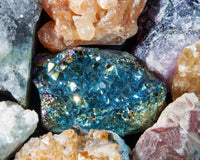Unlocking the Healing Power of Tuning Forks: A Journey into Sound Therapy and Chakra Balancing
In the world of holistic healing and wellness, tuning forks have emerged as powerful tools for promoting balance, harmony, and overall well-being. These simple yet profound instruments resonate with the very essence of our being, offering therapeutic benefits that span physical, emotional, and spiritual dimensions. As we delve into the fascinating realm of tuning forks, we will explore what they are, how to use them, and how they can effectively balance our chakras, all from a personable and knowledgeable perspective.
What Are Tuning Forks?
Tuning forks, initially created for tuning musical instruments, have transcended their original purpose to become vital tools in the field of sound therapy. These forks are typically made from metal and consist of a handle and two prongs (or tines) that vibrate when struck. Each tuning fork is calibrated to vibrate at a specific frequency, which is often measured in Hertz (Hz). This frequency determines the pitch of the sound the fork produces.
In sound therapy, tuning forks are used to generate pure, consistent tones that interact with the body's energy field. This interaction can stimulate healing processes, promote relaxation, and enhance mental clarity. The beauty of tuning forks lies in their simplicity and effectiveness—they harness the power of sound waves to create a state of resonance and balance within the body.
How to Use Tuning Forks
Using tuning forks for sound therapy is both an art and a science. The process is intuitive and can be easily learned, making it accessible to both beginners and seasoned practitioners. Here’s a step-by-step guide on how to use tuning forks effectively:
-
Selecting the Right Forks: Start by choosing the appropriate tuning forks for your intended purpose. There are various sets designed for different therapeutic applications, such as chakra balancing, pain relief, and emotional healing. Each fork corresponds to a specific frequency that resonates with different parts of the body or energy centers.
-
Activating the Forks: To activate a tuning fork, gently strike it against a firm but non-metallic surface, such as a rubber activator or the heel of your hand. This action sets the fork vibrating, producing a clear, sustained tone.
-
Applying the Forks: Once activated, you can apply the vibrating forks to specific areas of the body or hold them near the ears to allow the sound waves to penetrate deeply. When working with chakras, you can place the fork near the corresponding energy center, allowing its frequency to interact with the chakra’s vibrational field.
-
Listening and Feeling: Pay close attention to the sensations and sounds as the tuning fork vibrates. You might feel subtle shifts in your body, such as tingling, warmth, or a sense of relaxation. The tones can help to release tension, clear blockages, and restore balance.
-
Repeating and Integrating: For optimal results, repeat the process regularly. Consistent use of tuning forks can help to maintain a harmonious energy flow, supporting long-term health and well-being.
How Tuning Forks Balance Chakras

Chakras are the energy centers within our bodies that regulate various physical, emotional, and spiritual functions. There are seven main chakras, each associated with specific aspects of our being and corresponding to different frequencies. When these chakras are balanced and aligned, our energy flows freely, promoting health and vitality. Tuning forks can be particularly effective in balancing chakras due to their ability to resonate with and influence these energy centers.
Root Chakra (Muladhara): The root chakra, located at the base of the spine, is associated with feelings of safety, security, and grounding. A tuning fork tuned to a lower frequency (around 194 Hz) can help to anchor and stabilize this chakra, fostering a sense of foundation and connectedness to the earth.
Sacral Chakra (Svadhisthana): Situated just below the navel, the sacral chakra governs creativity, sexuality, and emotional expression. Frequencies around 210 Hz can stimulate this chakra, enhancing creative flow and emotional balance.
Solar Plexus Chakra (Manipura): Located in the upper abdomen, the solar plexus chakra is linked to personal power, confidence, and self-esteem. Tuning forks at approximately 126 Hz can empower this chakra, helping to cultivate inner strength and self-assurance.
Heart Chakra (Anahata): The heart chakra, found at the center of the chest, is the hub of love, compassion, and emotional healing. Frequencies around 136.1 Hz resonate with this chakra, promoting feelings of unconditional love and emotional harmony.
Throat Chakra (Vishuddha): Situated at the throat, this chakra governs communication, self-expression, and truth. Tuning forks around 141.27 Hz can enhance the clarity and authenticity of communication, encouraging the free flow of expression.
Third Eye Chakra (Ajna): Located between the eyebrows, the third eye chakra is associated with intuition, insight, and spiritual awareness. Frequencies around 221.23 Hz can stimulate this chakra, enhancing intuitive abilities and spiritual perception.
Crown Chakra (Sahasrara): Positioned at the top of the head, the crown chakra is linked to higher consciousness, spiritual connection, and enlightenment. Tuning forks at approximately 172.06 Hz can open and harmonize this chakra, facilitating a deeper connection to the divine and universal wisdom.
A Personal Journey with Tuning Forks
My journey with tuning forks began several years ago during a particularly stressful period in my life. I was seeking a natural, effective way to manage stress and enhance my overall well-being. Traditional meditation practices were beneficial, but I felt there was something more I could incorporate to deepen my experience. That’s when I discovered the transformative power of tuning forks.
The first time I used a tuning fork, I was struck by the immediate sense of calm and clarity it brought. As I activated the fork and placed it near my ears, I could feel the vibrations permeating my entire being, soothing my mind and relaxing my body. It was as if the sound waves were gently massaging my energy field, clearing away the stress and tension.
Over time, I began incorporating tuning forks into my daily meditation practice. Each morning, I would spend a few minutes activating and applying the forks to my chakras, starting from the root and working my way up to the crown. This practice not only enhanced my meditation but also brought a profound sense of balance and harmony to my life.
Heal & Harmonize Crystal Tuning Fork
One of the most memorable experiences I had with tuning forks was during a particularly challenging emotional period. I was struggling with feelings of grief and sadness, and no matter what I tried, I couldn’t seem to shake them off. I decided to focus on my heart chakra using a tuning fork tuned to 136.1 Hz. As I activated the fork and held it near my heart, I felt an overwhelming sense of warmth and release. The vibrations seemed to penetrate deep into my emotional core, gently dissolving the heaviness and bringing a sense of peace and healing.
Since then, tuning forks have become an indispensable part of my wellness toolkit. They have helped me navigate through various challenges, from physical pain to emotional turmoil, always guiding me back to a state of balance and alignment. The beauty of tuning forks lies in their simplicity and accessibility—they are easy to use and can be incorporated into any wellness routine, regardless of one’s experience or background in sound therapy.
Healing Benefits of Tuning Forks
Tuning forks are more than just tools for sound therapy; they are gateways to a deeper understanding of our own energy and well-being. By harnessing the power of sound and vibration, tuning forks offer a natural, effective way to balance our chakras, promote healing, and enhance our overall quality of life. Whether you are a seasoned practitioner or a curious beginner, the journey with tuning forks can be a transformative and enriching experience.
As you explore the world of tuning forks, remember to approach the practice with an open heart and mind. Listen to the sounds, feel the vibrations, and allow yourself to be guided by the subtle yet powerful energies that these remarkable tools bring. In doing so, you will unlock new levels of harmony, balance, and well-being, both within yourself and in your connection to the world around you.
































